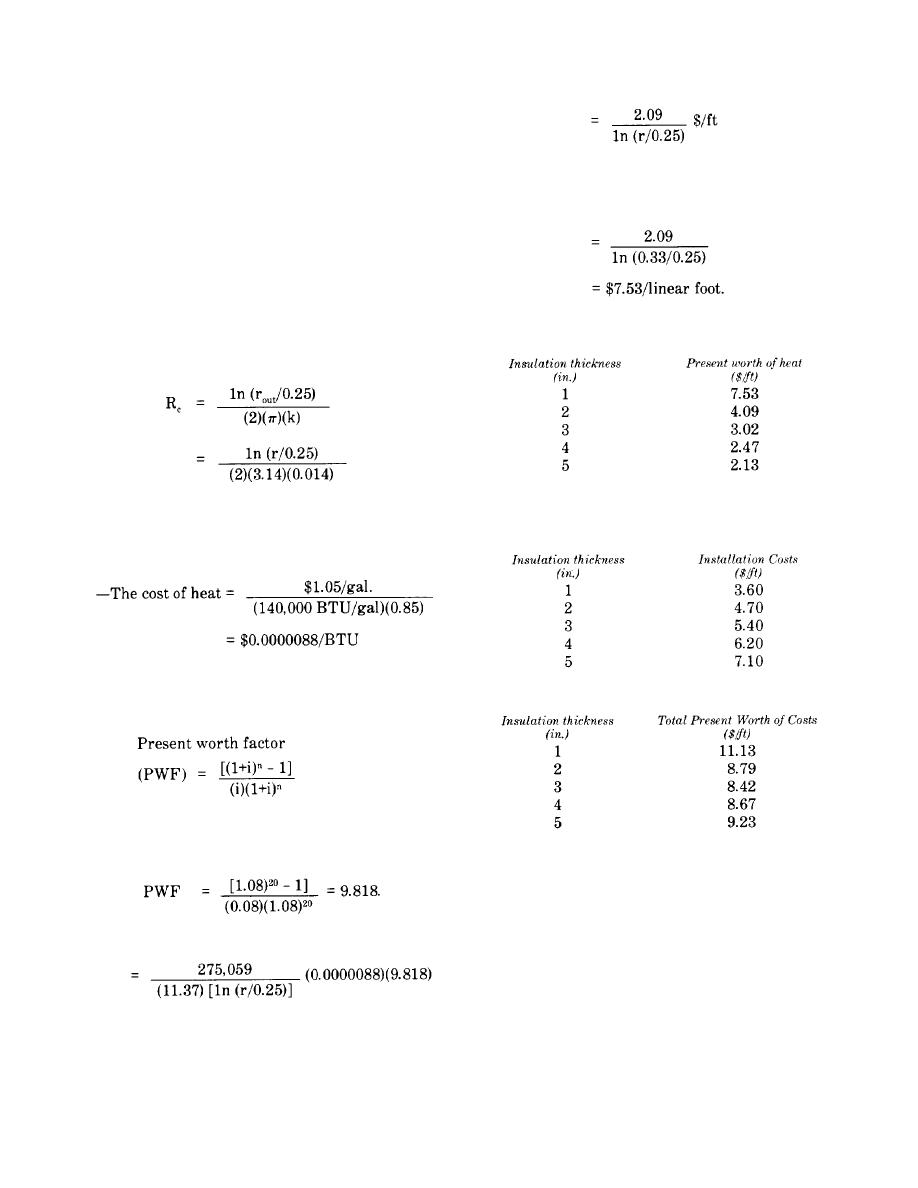
TM 5-852-5/AFR 88-19, Volume 5
maximum heat loss rate calculated in paragraph 12-
9e (134,904 BTU/yr LF pipe).
i. Determine the economical thickness of insula-
tion for an above-ground 6-inch-OD water main to
be located at Barrow, Alaska (temperature
at an insulation thickness of 1 in., r = (1/12 in.) +
conditions as defined in paragraph 12-9f). Assume
(0.25 ft) = 0.33 ft. Therefore, the present worth of
fuel oil cost (140,000 BTU/gallon) at
||content||
.05/gallon,
heating costs
and an 85% efficient heating plant. Assumed
installed costs of polyurethane foam are tabulated
below for various available thicknesses. Thermal
for polyurethane is 0.014
BTU/fthrEF. Assume a 20-year design life at an
interest rate of 8%.
--Repeat calculations, and tabulate, for typical
--Neglecting air film and steel pipe material, the
insulation thickness:
combined thermal resistance is
--Installation costs for polyurethane insulation
= (11.37) [ln(r/0.25)
(assumed for this example only, obtain from
suppliers in actual case):
--The heating index for Barrow, Alaska, would
be 275,059EFhr (see example 12-9g).
--The economical thickness will have the lowest
total cost for construction plus the present worth
--Combining heating and construction costs give:
of the annual heating costs:
where i = interest rate (as a decimal)
n = design period
for i =0.8 and n = 2O
--Plot these results on arithmetic graph paper to
determine the lowest cost. Then select the available
nominal thickness of insulation that is closest to the
graphical value. In this case a 3-inch thickness
--Present worth of heating costs = heating
would be the most cost effective for the conditions
index/Rc x (PWF)(cost of heat)
assumed.
12-22



 Previous Page
Previous Page
